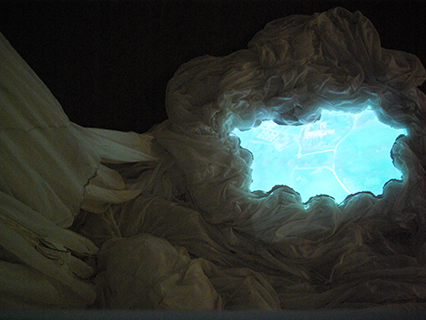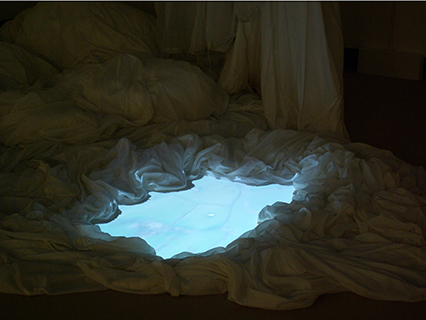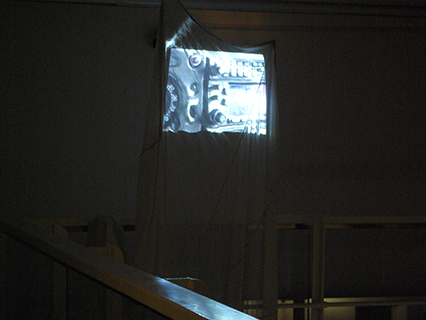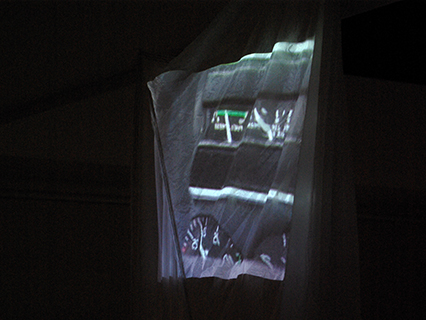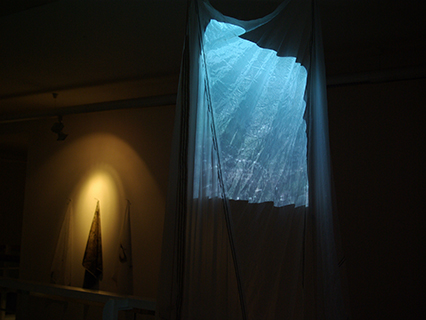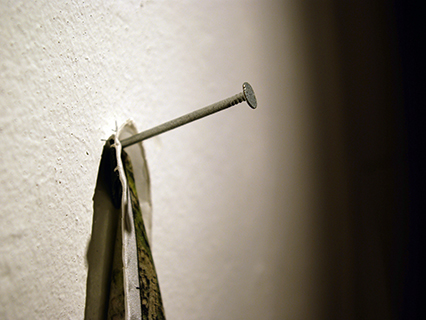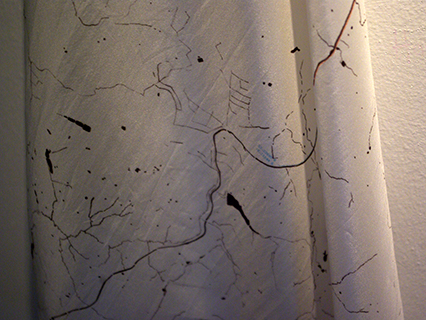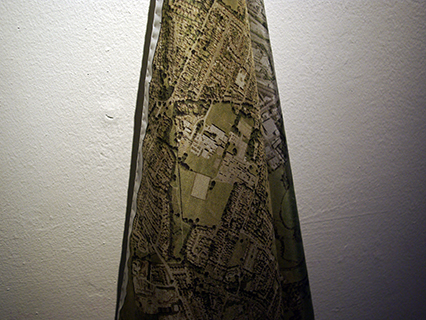Double Vision
(2012)
Double Vision is concerned with multiple perspectives: aerial perpectives in flight, maps, embodied human view points, and the places in which they meet and combine; map reading and in flight.
A parachute hangs from the ceiling, becoming a screen for two video projections, one vertical the other horizontal. Standing on the balcony a viewer can gaze down at the slowly moving landscape, and glance up at the instrument panel above. The video on the floor was shot from a light aircraft with a static camera and shows a short flight from take off to landing. Its shape is a reference to the first drawing of the ground made by a person in flight in aeropaidia. The vertical projection at the top of the parachute is the view of a passenger, the framed shot moving as attention to the environment changes, and as navigation proceedures in a light aircraft are observed. These two views of the terrain form a double vision, that of an embodied viewer and of a fixed camera.
Three silk maps (each approx. 100cm2) from the work Here hang beside the projections, the geometry of latitude and longitude folded as the silk hangs, further distorting easy readings of the landscape from above.
The work is also concerned with a sense of (at least) double vision cultivated while working across the boundaries of art and sociology, in both material and discursive practices. Through this activity I attempt to engage with practice and production while also observing and analysing, processes that are not always easily differentiated. This goes beyond the performativity of research methods that ‘do not simply describe but in some measure help to do the realities that they discover’ (Law 2008: 640) into the creative production of artworks and therefore research situations.
This work was produced at a similar time to writing this book chapter:
Southern, J. (2013) 'Comobile perspectives'. in R Buschauer & KS Willis (eds), Locative media: multidisciplinary perspectives on media and locality. Transcript, Bielefeld, pp. 221-239.


